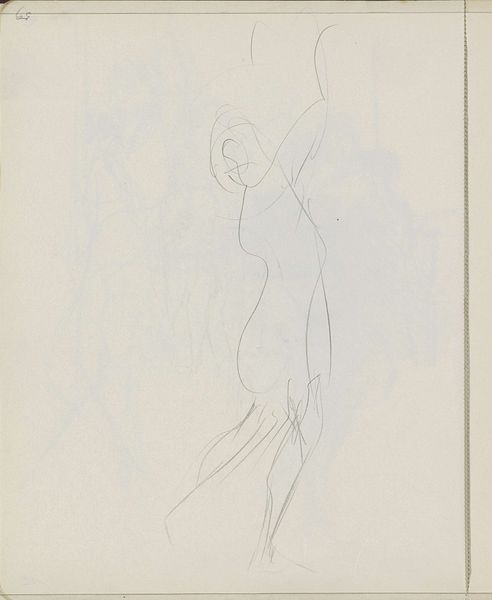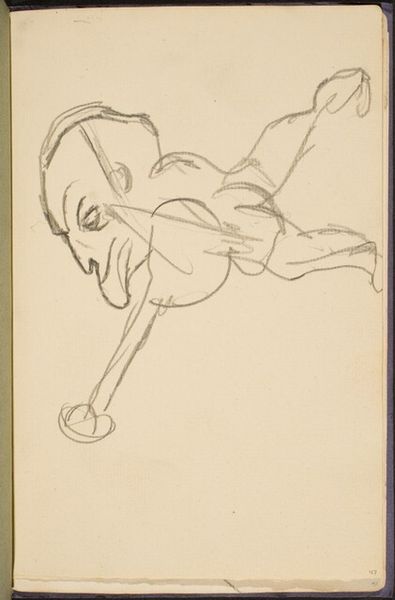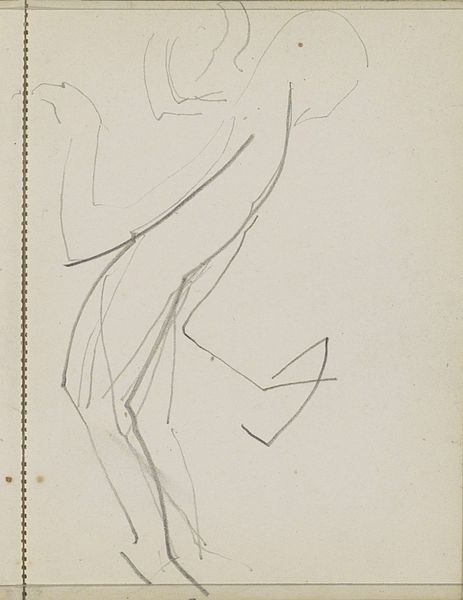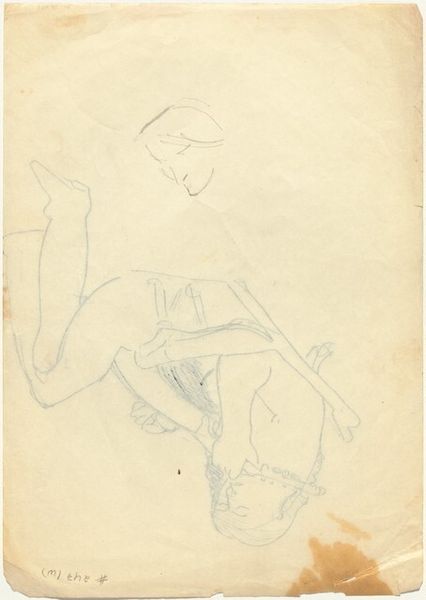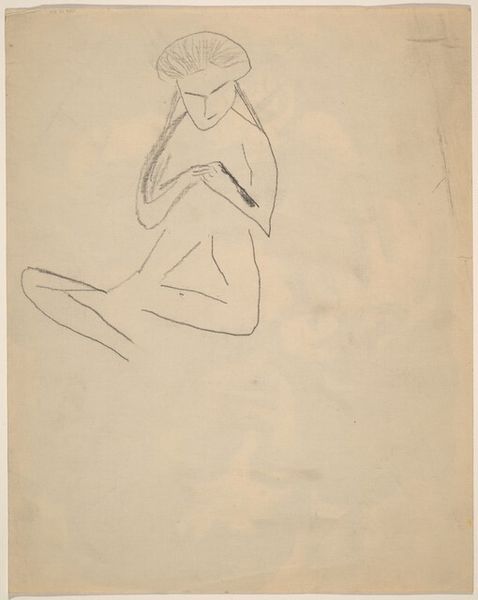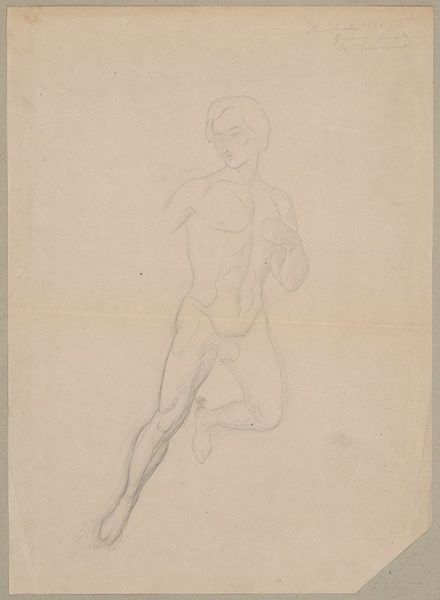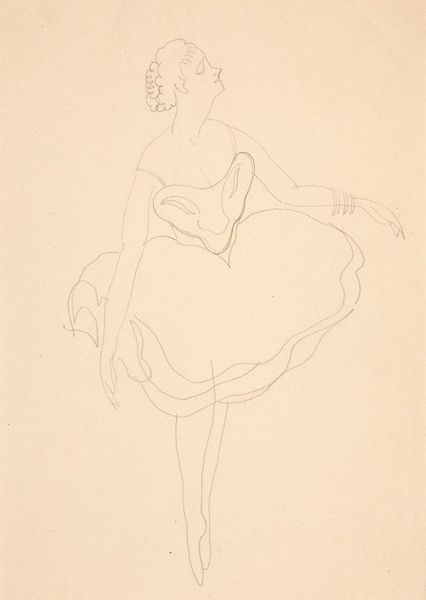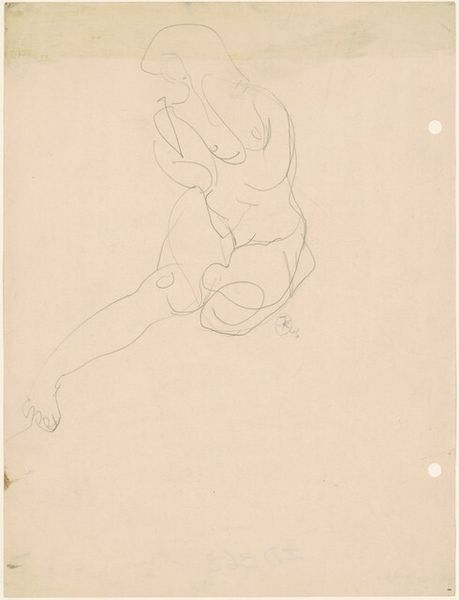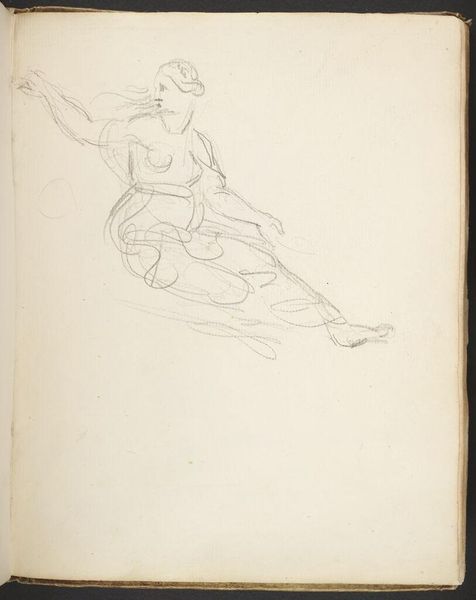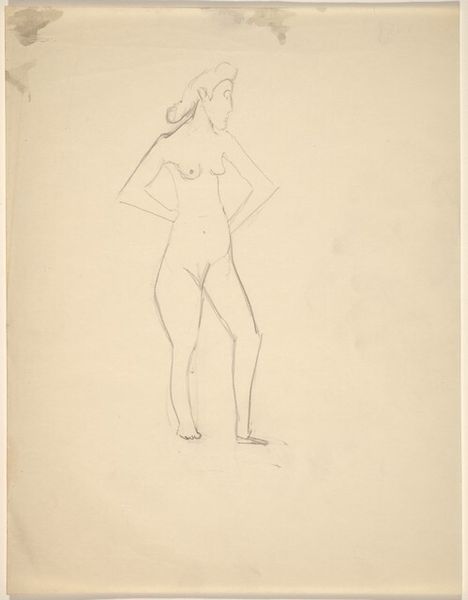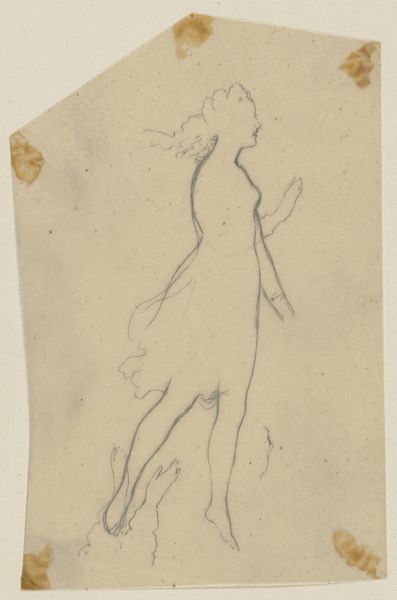
drawing, pencil
#
portrait
#
pencil drawn
#
drawing
#
cubism
#
ink drawing
#
pencil sketch
#
etching
#
figuration
#
pencil drawing
#
pencil
#
line
#
watercolour illustration
Copyright: Public Domain: Artvee
Editor: Here we have Charles Demuth's "Vaudeville Dancer," created around 1916-1918. It's a pencil drawing, seemingly a quick sketch. I'm immediately struck by the energy; the dancer looks like she's caught mid-leap, and yet there's something so fragile and tentative about the line work. What catches your eye? Curator: Fragile is a perfect word, isn't it? It's almost like Demuth captured a fleeting thought, or a ghost of movement. What I find intriguing is the intersection of apparent simplicity and underlying complexity. He's clearly influenced by Cubism with those fragmented planes, but there's a softness that defies the rigid geometry. Does that contrast speak to you? Editor: Absolutely. I see the cubist influence, but it's so much looser than what I normally associate with that style. It feels like he's more interested in the feeling of movement than accurately depicting the dancer’s form. It feels very immediate and ephemeral, more about capturing a vibe than a likeness. Curator: Exactly! Perhaps he wasn’t aiming for objective truth, but rather subjective experience. Think of vaudeville – bright lights, fleeting performances, illusion. Could this be his impressionistic memory of a night at the theatre? I mean, maybe it's less about *who* the dancer is, and more about *what* she represents? A spark of joy? A whisper of beauty? What did it meant to see her dancing then, there, like that? Editor: That makes perfect sense! I hadn't considered it that way, but viewing it as an impression of an experience, rather than just a portrait, really opens it up. Thank you! Curator: My pleasure. Sometimes, art whispers secrets when we're not listening too hard!
Comments
No comments
Be the first to comment and join the conversation on the ultimate creative platform.
